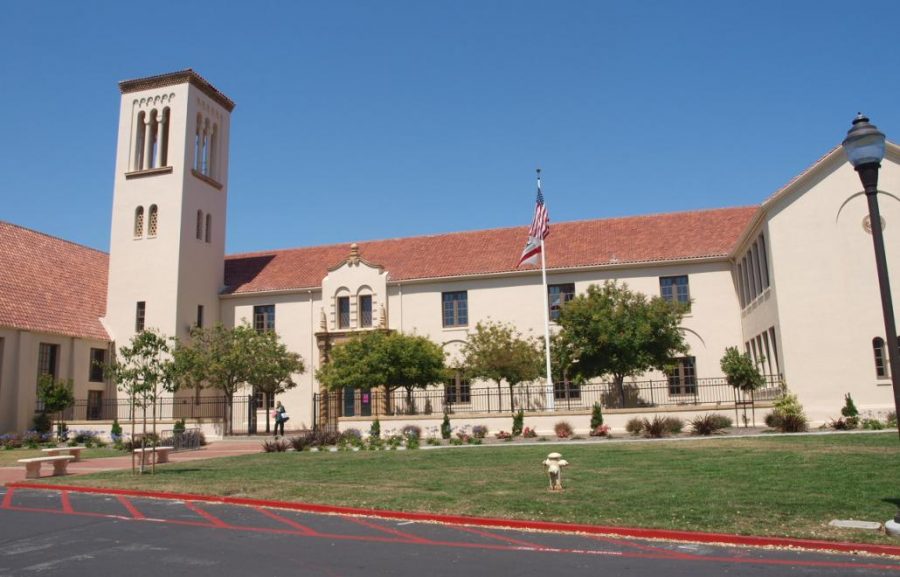Student stress high at sister school
Methods of handling stress differ between New Trier and sister school
March 6, 2017
The Palo Alto Unified district in California has experienced two suicide clusters since 2009, making its teen suicide rate roughly four times higher than the national average.
The Silicon Valley school district may be over 2000 miles away from New Trier, but proximity is one of few differences between the institutions.
Palo Alto Unified is made up of two schools, Palo Alto High School and Henry M. Gunn High School, both of which resemble New Trier in a variety of ways.
For example, according to US News and World Report, Gunn has a graduation rate of 96% compared to New Trier’s 98%. Additionally, their percentage of economically disadvantaged students is 7% at Gunn compared to New Trier’s 3%.
Palo Alto Unified and New Trier are also both part of the 21st Century Consortium, a group of seven schools. The group spans across the country, with schools from California, Texas, Nebraska, and Minnesota.
Administrative members including Winnetka Principal Denise Dubravec meet with the rest of the consortium twice a year. Although the trip may seem a bit far between schools, it’s worth it to be able to meet with comparable institutions.
“Those seven schools have similarities in challenges, successes, as well as socioeconomic and academic excellence, and extracurricular involvement,” said Dubravec. “It’s hard to find schools that are similar to us within our own state.”
At the meetings, the schools collaborate on policies and try to draw from each others’ experiences.
“We generate agendas on topics that we think are pertinent to the work that’s going on in the school,” said Dubravec.
Because the schools parallel each other so closely, a problem that arises in one might raise concern for the others.
All of the schools in the consortium did a graduate study together, and the results from Palo Alto and New Trier were very similar. While graduates from both districts generally felt well-prepared for college, they seemed to struggle with issues like time management, finances, and downtime.
The Palo Alto schools are working with Stanford University in a program called Challenge Success that aims to help parents and schools in balancing their students’ lives.
Gunn High School also eliminated the option of taking academic classes before school in order to correct the issue of overscheduling.
However, though stress is constantly recognized as an issue at New Trier, Dubravec said that the administration didn’t consider removing early bird classes, finding it to have more positive than negative effects for students.
“Early bird allows kids to take courses that really are a passion for them,” she said. “It’s really opening it up for them to take an elective that they might not be able to take.”
Dubravec also identified a few other New Trier resources that may help lower student stress levels compared to the sister school.
“We have a much larger post-high school counseling program that’s solely dedicated to post-high school counseling, not registering kids for classes,” she said.
She also talked about the adviser system and said of the Palo Alto schools, “They have an adviser system, but it’s somewhere midday, it’s not as consistent, and it’s developing.”
Flexibility was another issue that Dubravec found to be helpful to New Trier students. She suggested that the level system gives students enough options to control their own courseload.
“Our academic program allows kids a little bit of an opportunity to relieve some stress, so if they want to pursue math and science and take a step back in English, they have that option,” she said.
However, she still recognized that not all students may take full advantage of the various levels.
“There are kids here who are worried that they might not get into a college if they take that option,” she said.
The idea of excessive stress taken on by advantaged students is hardly new. According to clinical social worker and Wilmette resident Kathy Arneson, “Living in upper-middle class communities where people are generally high achieving can contribute to levels of stress and competition,” she said.
In psychologist Madeline Levine’s book, “The Price of Privilege,” she discussed the rise of mental disorders among teens from wealthy, well-educated families.
Despite her previous assumptions, she said, “some aspects of affluence and parental involvement might be contributing to the unhappiness and fragility of my privileged patients.”
Trying to live up to the expectations of successful parents or neighbors can put pressure on privileged students that others might not necessarily face. “In competitive environments, it can be easy to miss someone who’s having a hard time,” said Arneson. “It’s important for the school to be very cognizant and aware of the risk factors so they can be identified early on.”












































